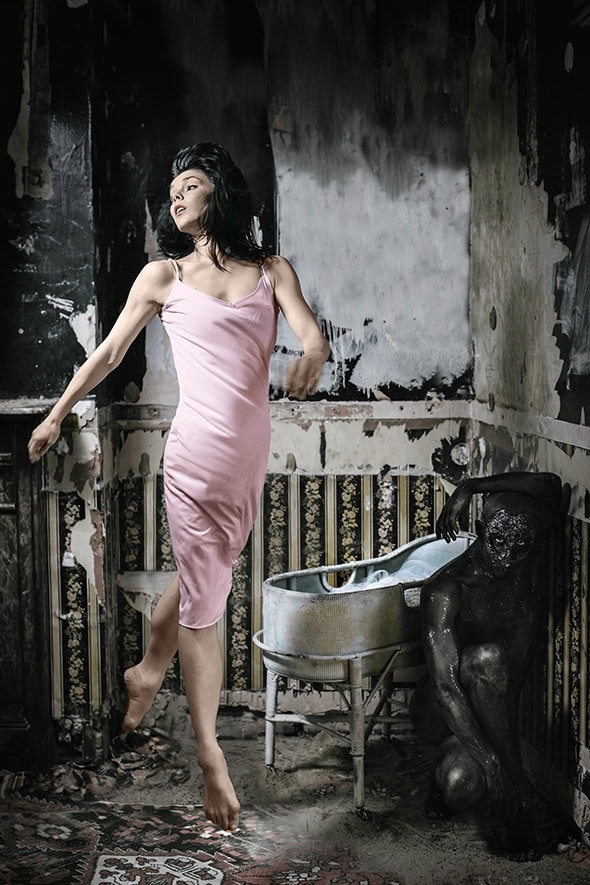Arthur Pita’s The Mother at Southbank Centre
Posted: July 2nd, 2019 | Author: Nicholas Minns & Caterina Albano | Filed under: Uncategorized | Tags: Arthur Pita, David Plater, David Price, Force of Nature Natalia, Frank Moon, Gerald Fox, Giulia Scrimeri, Hania Kosewicz, Hans Christian Andersen, Jonathan Goddard, Natalia Osipova, The Mother, Yann Seabra | Comments Off on Arthur Pita’s The Mother at Southbank CentreArthur Pita, The Mother, Queen Elizabeth Hall, June 20

Gerry Fox’s documentary about Natalia Osipova, Force of Nature Natalia, was originally conceived as a promotional film about Arthur Pita’s new work for Osipova and Jonathan Goddard, The Mother, based on Hans Christian Andersen’s tale, The Story of a Mother. Fox started filming in 2018, and soon realised it would be a shame to limit the scope of the film to one work among many that Osipova was rehearsing or performing concurrently with Pita’s rehearsals. Force of Nature Natalia thus looks at a year in the life of Osipova as a dancer while spreading its biopic scope to her youthful background in gymnastics and ballet. Clips of those early years of burgeoning talent and promise, both in class and on stage with the Bolshoi, are enthralling, while a rehearsal with Natalia Makarova of La Bayadère at the Royal Ballet and a tantalisingly short extract from a performance of Giselle with Carlos Acosta are proof of her extraordinary ability to find the drama within classical ballet technique. Ballet developed its dynamism and virtuosity around an upright axis — its origin is in seventeenth-century court etiquette — and within its highly codified language the dramatic expression for an artist as gifted as Osipova arises out of the technique. Fox transitions from this stage of the ballerina’s fêted career to her desire to branch out into contemporary dance by filming her dancing body as it negotiates the work of choreographers Ivan Perez, Sidi Larbi Cherkaoui, and Jason Kittleberger. But in a contemporary dance setting it’s as if Osipova’s emotional compass has been reset and is missing its true north. In charting the course from Giselle to The Mother, Fox unwittingly shows that no contemporary choreographer has yet managed to mine Osipova’s rich seam of expressivity in the way the ballets of Marius Petipa or Jules Perrot have done. Of those choreographers she has worked with, Pita’s predilection for narrative would seem to favour Osipova’s ability to inhabit a character on stage. Pita claims his form of narrative dance theatre is ‘worlds away’ from Osipova’s famous classical roles and that ‘Natalia is a very instinctive performer’. Both statements are true but it is Osipova’s technical prowess that frames that instinct. For her to express the drama of Pita’s narrative in a contemporary vocabulary she has to create a maelstrom of movement — as she does memorably at the very beginning of The Mother when she realizes her child has died, which she recapitulates at the end when she crosses the lake of tears (shades of Swan Lake) — but in between these moments her body is in motion but not moved. Apart from a Russian folk dance with Goddard, she seems in a constant state of transition between leaving her classical world and entering the contemporary one, and what we see too often are the vestiges of the former — her elevation, flexible extensions and exquisite articulation — without the evidence of the latter.
Andersen’s tale follows the mother as she chases after Death to retrieve her child, bargaining along the way with a number of anthropomorphic spirits — the faceless Babushka, the Rose Gardner, the Ferryman, the White-Haired Witch and the Lover — who test her resolve by setting her monstrous tasks that emphasize the supernatural and psychic nature of her quest. Pita has Goddard play all these roles in an array of costumes — designed by Yann Seabra, aided by costume supervisor Giulia Scrimeri and made by Hania Kosewicz — but his quirky sense of humour morphs the supernatural nature of the original tale into camp extravagance that is at odds with Goddard’s dour muscularity. Andersen’s Rose Briar thus becomes Goddard the Rose Gardner in a long black dress and high heels snipping stems in her flower stall. So on the one hand you have Osipova as the harrowed mother dealing with the death of her child and on the other Goddard’s profusion of partners whose interaction revels in the comedic rather than in the psychological trajectory of mourning symbolised by the spirits. If Pita is using The Mother — not to mention Osipova’s reputation — as a sly send-up of the classical pas de deux, he is also trivialising Andersen’s dark tale. Seabra’s revolving set adds its own drole fairground mechanics to the mix while David Plater’s lighting and haze, especially as seen through the set’s opening doors, is profusely melodramatic. Frank Moon and David Price are the multi-instrumental two-piece band on either side of the stage who anchor a work that is otherwise in danger of shipwreck.